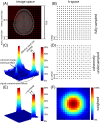Terminology and concepts for the characterization of in vivo MR spectroscopy methods and MR spectra: Background and experts' consensus recommendations
- PMID: 32808407
- PMCID: PMC7887137
- DOI: 10.1002/nbm.4347
Terminology and concepts for the characterization of in vivo MR spectroscopy methods and MR spectra: Background and experts' consensus recommendations
Abstract
With a 40-year history of use for in vivo studies, the terminology used to describe the methodology and results of magnetic resonance spectroscopy (MRS) has grown substantially and is not consistent in many aspects. Given the platform offered by this special issue on advanced MRS methodology, the authors decided to describe many of the implicated terms, to pinpoint differences in their meanings and to suggest specific uses or definitions. This work covers terms used to describe all aspects of MRS, starting from the description of the MR signal and its theoretical basis to acquisition methods, processing and to quantification procedures, as well as terms involved in describing results, for example, those used with regard to aspects of quality, reproducibility or indications of error. The descriptions of the meanings of such terms emerge from the descriptions of the basic concepts involved in MRS methods and examinations. This paper also includes specific suggestions for future use of terms where multiple conventions have emerged or coexisted in the past.
Keywords: MR spectroscopic imaging, MR spectroscopy, spectroscopic quantitation, standardization.
© 2020 The Authors. NMR in Biomedicine published by John Wiley & Sons Ltd.
Figures



References
-
- Axel L, Margulis AR, Meaney TF. Glossary of NMR terms. Magn Reson Med. 1984;1:414‐433. - PubMed
-
- Bernstein MA, King KF, Zhou XJ. Handbook of MRI Pulse Sequences. Burlington, VT: Academic Press; 2004.
-
- Brown RW, Cheng Y‐CN, Haacke EM, Thompson MR, Venkatesan R. Magnetic Resonance Imaging: Physical Principles and Sequence Design. 2nd ed. Hoboken, NJ: Wiley Blackwell; 2014.
-
- Ernst RR, Bodenhausen G, Wokaun A. Principles of nuclear magnetic resonance in one and two dimensions. Oxford, UK: Clarendon Press; 1987.
-
- Levitt MH. Spin Dynamics, Basics of Nuclear Magnetic Resonance. 2nd ed. Hoboken, NJ: Wiley; 2008.
Grants and funding
LinkOut - more resources
Full Text Sources
Miscellaneous

